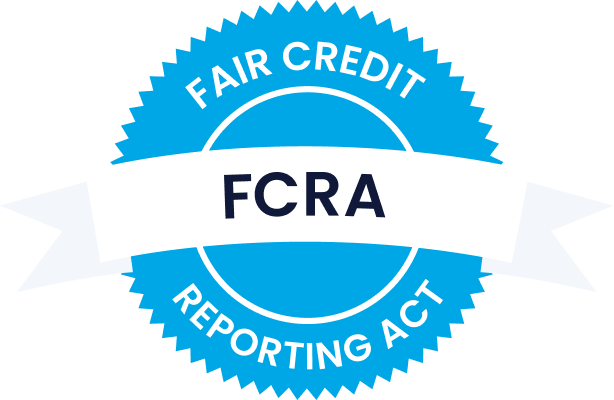Matching tenants to your property is like finding a partner on a dating app. Days of spontaneous encounters are now rare. The dating world has become choosy. Many people make their choices online with professional-standard profiles that include detailed criteria for their ideal partner, including age, appearance, location, occupation, education, lifestyle choices, values, personality traits, and pets.
Why have a tenant screening checklist?
If dating apps know that defining your selection criteria increases the odds of finding a good match, wouldn’t it make sense to take the time to outline your tenant selection criteria for your rental property? A tenant screening checklist has all the requirements that you would like your future renter to meet. This ensures a good fit for your rental property and gives you a better chance of attracting a quality tenant.
What should be included in the tenant selection criteria?
When it comes to creating a tenant selection criteria, these factors can help you decide what to include.
What property type do you have?
Begin the process of defining your rental requirements with property type. Each property appeals to specific types of tenants – there is no such thing as “one size fits all.”
Each of these property types attracts a specific tenant type.
- a bachelor condo in a high-density downtown area
- a three-bedroom townhouse in a blue-collar neighborhood
- an exclusive downtown penthouse with every possible amenity
- budget apartments in the university area
- a five-bedroom house in suburbia close to schools
A family of five would most likely be looking for a house in suburbia, just as a student would seek a budget apartment close to the university. Remember that the property, neighborhood, and location can help you refine your tenant selection criteria.
Is your property type suited to single professionals, small families, retired couples, or students?
Who lives in your neighborhood?
Each neighborhood has a unique personality and demographic: some may have more professionals, established couples, young families, or students. Knowing who already lives in the neighborhood is an excellent indicator of who will live there in the future. Identifying your neighborhood’s personality takes you one step further in defining your tenant screening criteria.
Age of property
The next step in setting your tenant selection criteria is to reflect on the age of your property. Is it brand-new, ten years old, or built in the 1970’s? Though well-heeled tenants may typically choose brand-new accommodations in the best areas of town, it isn’t unusual to find a well-maintained, 1960s apartment building in an established area that attracts high quality tenants.
Regardless of the age of your property, if it is clean, well-maintained, and in a secure area, you will significantly increase the likelihood of attracting great tenants who take pride in their homes and surpass your rental requirements.
Number of tenants
Minimum housing and health standards specify space requirements based on the size of sleeping spaces per adult/bedroom. They also have rules for areas where people are prohibited from sleeping that are not considered bedrooms, such as basement rooms with no windows. However, as a landlord, you can restrict the number of people living in your unit. The number of tenants is essential for your rental requirements since the more people, the greater the wear and tear and the higher your utility costs (if utilities are included). Too many tenants in one space can also cause premature aging of your rental property—and thinning of your pocketbook (and hair).
Smoking
There are certain regions where you may forbid smoking of any or all substances in your rental property, including cannabis. Tenants who have a prescription to smoke medical marijuana for health reasons are protected by laws in many parts of the word, and you may have a duty to accommodate them. However, you could designate the condo balcony or backyard deck as an allowable smoking area. Always check local regulations to understand what smoking policies you can enforce.
Pets
Be sure to include pets in your tenant screening checklist. In some jurisdictions, pet leases are not covered under residential tenancy laws, it’s up to you, the landlord, to decide whether pets are allowed, and if so, what type, breed, weight, and under what conditions.
One exception to the rule in many places is service animals, which are not considered pets. Landlords cannot discriminate against tenants requiring the assistance and support of an animal, and thus have a duty to accommodate.
For example, in Alberta, you can ask tenants to sign a pet lease, including pet rules, fees, and the consequences of pet issues. Many landlords ask to meet pets during showings and request pet references as part of their rental requirements. In addition to your pet leases and fees, many condominiums have their own pet policies and fees as well.
Rent
When it comes to how tenants pay rent, it’s a bit of a catch-22. Although you cannot ask tenants if they have a job, on the tenant application, you can ask for proof of income—which, for many, is a job. Employment is one of many ways for a tenant to pay their rent, however, tenants pay rent in various ways, such as pensions, inheritances, trust funds, savings, and investments. As part of your rental requirements for tenants, asking tenants to provide legitimate proof of finances and consent for a credit check is standard practice.
Parking
Many buildings have assigned/designated parking spaces. However, some buildings haven’t adequately planned for every member of the household owning vehicles. In your tenant selection criteria, you can specify how many parking spaces your rental property can accommodate at your building/house.
Children
Although landlords are not allowed to refuse to rent to people with children, when defining your tenant screening checklist, consider whether your house/townhouse/condo/apartment is child-friendly and if the neighborhood is suitable for kids.
Noise level
Many municipalities stipulate maximum noise levels for residential areas during daytime and nighttime hours. However, you can also indicate whether or not you will allow tenants to play musical instruments, have band rehearsals, etc. in your rental requirements for tenants.
Guests
Although landlords in many jurisdictions cannot include lease clauses banning overnight guests, if a guest is living at the property, the tenant must ask the landlord for permission, and the lease cannot be amended without the agreement of both parties. When meeting potential tenants, it’s good practice to remind them that the rental requirements specify that they cannot move additional people in without your knowledge or consent.
Duration and lease type
A critical element of your rental requirements is how long you want your tenants to rent your property. As a landlord, it’s essential to specify the lease duration and whether your tenant is signing a fixed-term or periodic lease.
A fixed-term tenancy specifies a predetermined tenancy date, which can be for any period, such as a week, month, six months, or 12 months duration. When the fixed-term tenancy ends, the tenant must leave.
A periodic tenancy also specifies tenancy for a duration such as week to week, month to month, or year to year. Unlike fixed-term tenancies, where there is a definite end date, a periodic tenancy can carry on indefinitely until either party gives notice that is in alignment with local residential tenancy laws. Periodic tenancies also state allowable reasons for ending a periodic tenancy and precise durations of required notice for both landlords and tenants.
Our final thoughts
Whether you are seeking a short, mid, or long-term tenant relationship, it makes sense to be strategic. Take the time to define your rental requirements for tenants so you have the best chance at finding the right renter for your property.
The best part about learning how to create your tenant selection criteria is that you can repeat the process for other properties. Learn more about how to find great tenants in five easy steps.



